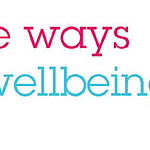On an episode of Steven Bartlett’s Diary of A CEO in August 2023, his guest on the podcast, Dr Joe Dispenza, speaks about how 95% of our decision-making and behaviour is unconscious. This isn’t necessarily a new revelation, however, it has me thinking about how organisations can consciously create environments to help their workforce make healthy decisions unconsciously.
There is an argument that organisations could look to force healthier behaviours onto their employees. Bjorn Borg – the sportwear company, closes their office once a week so that all of their staff can exercise for an hour. They also include personal health goals as part of their annual appraisal process and whilst this caused some to resign, is it a bad idea? I was intrigued and ran a LinkedIn poll to see how this would sit with my network. 19% of those who voted would resign if their organisation ‘forced’ them to exercise and whilst I appreciate that a LinkedIn poll is at best anecdotal, polls do require voters to make a decision, think about their choice, and illustrate their beliefs… consciously or unconsciously. My thinking then turned to how much more an organisation would gain by replacing the 19%, with employees who bought into an organisation trying to make them healthier.
This is a stark example, but supporting employees to be healthier and nudging their behaviour can be more subtle. In 1986, Eisenberger et al. published their research on perceived organisational support (POS) with findings that “support the social exchange view that employees’ commitment to the organisation is strongly influenced by their perception of the organisation’s commitment to them”. Or in other words, if an organisation demonstrates it cares about their workforce, this is reciprocated, and whilst this sounds obvious, it is important to note that this works both ways. When an organisation demonstrates it doesn’t care, this too is reflected in the behaviour of its employees.
With this research, it stands to reason that if organisations understand what their workforce care about and believe, then this would have an impact on their culture and experience of work. By understanding behaviour, and using research and evidence-based theories, organisations can be smart by their workforce making better decisions unconsciously.
behaviour theories
There are many theories on behaviour, and most if not all, slice the same cake a different way. The theories chosen for this blog are the ones which have been used in workplace health promotion research, and therefore provide peer reviewed evidence.
Theory of planned behaviour
One of the most common theories of behaviour is Icek Ajzen’s theory of planned behaviour (TPB). It’s a model which suggests that our beliefs drive our intentions, and our intentions drive our behaviour. There are three beliefs at the core of the model: Attitude, Subjective Norms, and Control. And these boil down to whether you believe a behaviour has a good outcome, what others believe, and how much control one has over the behaviour. It benefits organisations to understand that subjective norms are: 1) Injunctive – meaning that beliefs are formed by if a group or an individual approves of performing a behaviour, or not, and 2) Descriptive – meaning that beliefs are formed from people who are influential or important to you carrying out a behaviour.
It is also worth organisations understanding that there is an onus on an individual’s belief of self-efficacy and outside factors – that is, does one believe they have the ability to carry out a behaviour and what are the outside factors that may control how the behaviour turns out. This is called perceived behaviour control. Being aware of these parts of the theory can have a positive organisational impact which I’ve highlighted further along in this blog. Researchers widely agreed that the TPB provides a framework for understanding beliefs that act as facilitators or barriers to health behaviour, and therefore provides a platform for interventions.
COM-B
This is a more modern approach is utilising the learnings from Susan Michie and her multi-faceted model which incorporates the behaviour change wheel, and theoretical domains framework. The core of the model has three components: Capability, Opportunity, and Motivation which lead to behaviour change, hence the name COM-B. The theory allows for development in discovering barriers to behaviour and potential interventions to these barriers, such as assessing participants confidence and abilities, prompts, incentives, reinforcement, and social acceptance. Michie’s work is a stride in the right direction. The aspect of opportunity gives organisations a real chance to make a difference in changing their workforce’s beliefs. This is a progression from the TPB and can be enhanced by the Transtheoretical Model (TTM).
transtheoretical model
Often referred to as the stages of change theory, the Prochaska et al. research is based on the premise that beliefs which motivate change are in distinct phases. These beliefs, again, are centered on self-efficacy and perception of advantages. The stages start with pre-contemplation (not ready state), then move to contemplation (thinking about it), then to preparation (getting ready), then to action (doing), and finally, to maintenance (habit). The main factor for moving beliefs from one stage to the next is when the pros start to outweigh the cons and the new belief feels advantageous. However, it must be noted that relapse is possible at all stages except pre-contemplation. The TTM offers organisations a huge insight into how to encourage employees’ healthier beliefs and behaviours, and is most effective in organisational communication.
In isolation, each theory offers a similar take on behaviour – beliefs, culture/environment, capabilities, and outcomes, however, in collaboration with each other, the theories give organisations guidance to understand that beliefs lead to intentions (TPB), that intentions require opportunity (COM-B), and that opportunity requires prompts/communication to change or reinforce beliefs (TTM).
benefits to organisations
Depending on the kind of behaviour change an organisation is looking to achieve or sustain can help determine which theory or combination of theories to take inspiration from.
With knowledge of the TPB, organisations can take note of the subjective norms of the research. This can be in various forms, leadership role modelling is an obvious action as is encouraging peer support, team cohesion and feedback to create a healthier culture. As Eisenberger et al. testify this would be reciprocated. However, utilising the perceived behaviour control aspect can give organisations a helping hand. By supporting the belief that an employee can do something and remove barriers that are perceived to hinder the behaviour, can lead to a positive behaviour change. An example of this would be to set a sales target, a KPI or an objective that an employee believes is achievable and help remove any obstacles that might result in them failing. In doing so, an employer is building on the employee’s self-efficacy, control and ultimately belief that they can change behaviour with a positive outcome.
The COM-B research can be a gamechanger for organisations. The model is based on individuality, however, an organisation can substitute themselves in the opportunity component. In other words, the organisation creates opportunity for individuals that they may not have had. This could be by giving them free healthy meals whilst on-site or a chance to be physically active, like the Bjorn Borg sportswear company. It could also be a chance for employees to co-create their job roles and design, collaborate on polices and physical and psychosocial risk assessments, choose incentives and rewards, decide where and when to work, create communities and networks, and establish boundaries. It’s also worth noting that the biggest opportunity, is to offer these inclusively and equally.
Finally, the TTM is hugely valuable for communication. It gives reason for considering a communication strategy and adds weight to why so many health and wellbeing messages don’t land with employees. A company-wide one-size-fits-all email to promote a healthier workplace or to introduce a new support, has a limited impact. If we consider the various stages of readiness of the workforce (and hopefully, the data collected before sending a company-wide message), then a multi-targeted approach is likely to land more successfully as the research suggests. Employees who are in a pre-contemplation stage will have no interest in learning about what your organisation are going to do for others by simply introducing a new initiative and can actually create resentment. Continually telling an employee that you are supporting them when they are not ready for that support can have the opposite effect to what an organisation is trying to achieve.
Similarly, those who are in action or maintenance stage often like messages of reinforcement, and are turned off by messages of encouragement to start something new when they are already doing it – not too unlike existing customers seeing deals for new customers only. Let’s also remember that job locations, types, demographics, access to communications and managers are to be considered when understanding stage behaviour communications. For example, informing employees via email with a link to participate in a step competition may resonate with office workers who have daily access to emails, the time to click on the link, work in a team which takes lunch breaks together and therefore can go walking together and are conscious that their job is sedentary. However, this is unlikely to appeal to employees on a shop floor who are on their feet all day, don’t have regular access to email, and see no benefit in engaging with a step challenge… even if it is to raise money for charity. For this type of employee cohort, a more visual and direct approach of an on-site presence from HR, a wellbeing team or line managers demonstrating the overall benefits of being more active, and an alternative method to join in, are more likely to help them transition into a preparation stage.
Let’s learn to trust
Workplace health and wellbeing is predominantly about change management. And to change workforce behaviour consciously or unconsciously, it requires an understanding of their beliefs, and the information and knowledge of how to shape new ones. With society losing trust in the government, not knowing whether to believe the media, and an ever-polarised world, organisations have an opportunity to really support their workforce, and ultimately the wider society by demonstrating what they believe in, and therefore earning trust.
Author: Stuart Mace – EFS Volunteers’ Hub Lead
Photo credit: Shutterstock




